Do you think that influencer marketing is dead?
It’s a rumour that’s been circling online for a while, but we think it’s far from the truth.
Influencer marketing isn’t dead, but it is entering a new era and is set to be worth an eye-watering $24 billion by the end of 2024.
From the rise of AI and change in audience preferences, to TikTok’s takeover and the growth of mega-influencers, the influencer marketing landscape must continue to evolve to survive.
As it does, it’s pivotal for marketers to stay up to date with new and emerging trends to ensure their influencer marketing strategy is as effective as can be.
In this post, we’re going to think about why influencer marketing is changing and the key trends that will impact the influencer marketing space in 2024.
Before we jump in, we’re going to remind ourselves what influencer marketing is and where it came from.
What is influencer marketing?
Influencer marketing is a form of social media marketing.
It involves collaborating with online influencers to promote a brand, products, or service.
Depending on the extent of a campaign and social media platform, content could vary from an image of an influencer using a product to featuring it in several videos.
What’s the purpose of influencer marketing?
The main purpose of influencer marketing is to increase brand visibility and build credibility amongst a target audience.
We all value the opinion of those around us including those on the internet and that’s why influencer marketing is so effective!
69% of consumers trust what influencers say and recommend.
On average, a person spends 143 minutes on social media per day, so influencer marketing is something we see daily. But where did it come from?
Where did influencer marketing come from?
There’s no doubt that in recent years influencer marketing has become one of the most popular forms of marketing and an effective way for brands to reach new audiences and increase product exposure.
But would you believe us if we told you influencer marketing was evident as early as the eighteenth century?
In 1759, British potter Josiah Wedgwood opened his first workshop and quickly realised he needed to stand out from his competitors if he was going to earn a living.
In 1760, Wedgwood presented a tea set to King George II and Queen Charlotte. He received public recognition and leveraged his status as a ‘potter to the royal family’ to advertise his products, boost sales, and have them displayed in upmarket London showrooms.
In doing so, Wedgwood pioneered an influencer marketing strategy using celebrity endorsement to help his business flourish. By the time Wedgwood died in 1795 he’d amassed a fortune of up to £600,000 – that’s around $100 million today.
By the twentieth century, an increasing number of businesses recognised the power of an influencer marketing strategy – although it wasn’t known as that back then. Famous actors, sports stars, and singers like Marilyn Monroe and Elvis Presley began promoting products on billboards and television.
Although influencer marketing, in some form, has been used for a long time it wasn’t until the appearance of social media that it began to take shape.
As platforms like Facebook and Twitter (now X) grew, certain users started to build a following by sharing themselves and their life online. And, this encouraged brands to try something new and begin collaborating with creators to promote their products.
From here, influencer marketing continued to grow and expand with the rising popularity of visual platforms like Instagram, YouTube, and more recently TikTok.
In a Hubspot survey, 72% of marketers said they use Instagram to partner with influencers and creators. This was closely followed by TikTok which is used by 61% of marketers and YouTube at 58%.
From household names like Coca-Cola and Nike, to small businesses on TikTok, tons of brands have incorporated influencer marketing into their strategy.
A great example is the British fitness and apparel brand Gymshark.
Gymshark was founded by Ben Francis and Lewis Morgan in 2012. Twelve years later the brand is worth an estimated $1.45 billion and available in 230 countries.
A huge part of Gymshark’s success is due to its online presence and strong community of brand ambassadors who align with the brand’s mission, vision, and passion for fitness.
In an effort to expand the business, Gymshark took a risk and leveraged influencer marketing to increase brand awareness and it paid off.
They partnered with top fitness influencers, on YouTube and Instagram, many of whom were fans and loyal consumers of Gymshark. The creators received free clothing in exchange for featuring the pieces in their content. This meant Gymshark was exposed to millions of potential consumers in a way that felt genuine and before long sales went through the roof.
Gymshark is now associated with multiple influencers of all sizes, has over 60 million followers combined, has launched pop-up stores in the UK and US, and has created a multitude of creative campaigns.

You can hear more about Gymshark’s creative campaigns by listening to Jo Bird’s episode of The Girls in Marketing Podcast where she talks about her time as Gymshark’s Senior Creative and what it was like to work on some of their innovative campaigns.
Now we know where influencer marketing came from, how it’s grown, and seen an example of how a brand can use it to its advantage. So, let’s consider how influencer marketing is shifting in 2024.
How is influencer marketing changing in 2024?
Like any form of marketing, influencer marketing has had to adapt to stay relevant in our ever-changing digital landscape.
We’ve seen it change before and it’ll change again.
Before short-form content took over our social media platforms, influencer marketing was evident through long-form content on YouTube and aesthetic images on Instagram.
Zoella, PewDiePie, Tati, and the Sidemen are just a few examples of mega-influencers who launched their careers on YouTube or Instagram and have gone on to create other types of content on different platforms.
However, in 2023, we saw the rapid growth of “deinfluencing”.
“Deinfluencing” was a social media trend that saw creators discourage their followers from buying products.
@taylorrcroyle I don’t think its worth it 🤔 #summerfridays #summerfridayslipbalm #reality #realistic #lifestyle #deinfluencing #deinfluencingmakeup
♬ original sound – Taylor Croyle
Whilst deinfluencing was a trend, it indicated how the influencer marketing industry is changing and a demand for authentic content.
If you want to hear more about our take on influencer marketing and how it’s changing, we’ve got a podcast episode all about it.
In ‘Is this the END of Influencer Marketing as We Know It’, the team sit down to discuss examples of influencer marketing, their own experience of being influenced, and the evolution of influencers.
This is such an insightful episode and definitely one to watch or listen to if you work or are interested in the influencer marketing industry.
The need for genuine content is just one of the trends or changes that we expect to see in influencer marketing in 2024, so let’s take a look at some others.
Focus on long-term influencer partnerships
One-off content is a thing of the past as brands are looking to forge long-term partnerships with creators!
It seems that influencers will begin to play more of a brand ambassador role to showcase a brand and its products over time.
Think about it this way, it takes time to build trust with an audience and generate a sale, so long-term partnerships are often more authentic and effective.
A good example of this is French skincare brand Caudalie and UK beauty and lifestyle creator Amelia Olivia.
Amelia posted her first video on TikTok in 2020 and has since garnered 1.4 million followers. She’s known for her ‘Get Ready With Me’ videos and beauty tutorials, where she talks her audience through the steps and products she uses.
In numerous videos, Amelia showed herself using Caudalie products and even made their Instant Detox Mask go viral by showing its results.
Caudalie began gifting Amelia products which she showcased on her channel, and this felt authentic as her audience knew she was a fan of the brand and a loyal consumer.
Then in 2023, Amelia collaborated with Caudalie to release her ‘Glow Edit’ – a reusable cosmetics pouch filled with 5 of her favourite products and it sold out within no time.
@amelia0livia2 Replying to lesleyjaneridpath My Glow Edit with Caudalie is now LIVE- I hope you love, thank you for everything ad caudalie glowyskin skincareforbeginners
♬ original sound – Amelia Olivia
An increase in the use of AI
More than 80% of marketers have incorporated some form of AI into their online marketing activities.
From generating content to helping solve customer problems, AI is transforming the marketing landscape and changing the influencer marketing space.
In 2024, brands are expected to use AI to help them recruit influencers and make data driven decisions by predicting the success of a campaign using past data.
Cross-platform marketing campaigns
Nowadays, most creators are active on many different platforms and have fans who follow them on each one!
For brands, a collaboration with a creator who has a widespread audience offers a better opportunity to boost brand exposure, awareness, and potential sales.
Budget for ‘trendjacking’
In 2024, more brands intend to set aside a budget for trendjacking.
Trendjacking is a strategy where brands create content based on trends, pop culture moments, sounds, hashtags, or events with the intention of boosting brand awareness and highlighting a product or service.
Being reactive and engaging with viral moments offers brands the opportunity to reach a wider audience and improve their visibility.
We know by now that the world of marketing moves incredibly fast. Having a budget for trendjacking will enable a brand to engage with trends in an instant by creating content that will resonate with an audience and is timely.
For a brand that partners with influencers, content that’s relevant to a trend as it’s growing would have the potential to help with awareness, visibility, and sales.
@sitstillwme The Roman Empire trend explained! Also how cool is my brother 🫶 #fyp #romanempire #romanempiretrend #menandtheromanempire #stoicism #stoic #philosophy #marcusaurelius #lovelanguage
♬ original sound – margotlorthiois
Measurement is key
For any area of marketing, data and analytics is imperative.
As marketers, we rely on it to predict consumer needs, measure content performance, and ultimately make more informed decisions.
In 2024, influencer marketing will focus on advanced analytics instead of traditional metrics likes and views.
New tools and in-app measurement will enable brands and creators to measure average watch time, drop-off points, whether an audience clicked through to buy a product and more.
This will enable brands to have a better understanding of how well a campaign performed, the type of content an audience enjoys, audience engagement, and sales.
As we’ve established, there’s no doubt that influencer marketing is shifting in 2024 and by staying up to date with any trends or changes you can ensure you (and your marketing strategy) are always one step ahead.





